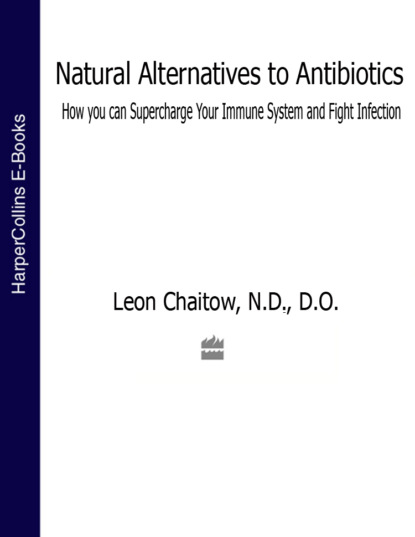По всем вопросам обращайтесь на: info@litportal.ru
(©) 2003-2024.
✖
Natural Alternatives to Antibiotics: How you can Supercharge Your Immune System and Fight Infection
Автор
Год написания книги
2019
Настройки чтения
Размер шрифта
Высота строк
Поля
Many aspects of these health-promotion practices and immune-enhancing methods are discussed in later chapters.
What Happens in Hospitals?
Drugs, especially antibiotics, are widely used.
The presence of many different diseases and associated microorganisms offers a greater chance for cross-infection – infections being transferred from one person to another.
Highly specialized drugs, which may be new or only capable of being used under controlled conditions, are often used in hospitals only – so exposing bacteria to new substances to which they can start becoming resistant.
Antibiotics applied to the skin are widely used in hospitals and can lead to resistant strains rapidly emerging (this is something which has been observed when extensive use of antibiotics are involved in treating burns cases, for example).
It is common for people who spend time in the hospital – staff as well as patients – to become colonized with resistant bacteria, especially in their intestinal tracts (so allowing the bacteria to appear in their feces) and on the skin.
It is all too easy for staff to pass such resistant bacteria around as they touch patients, their beds or their food.
When catheters are used or injections given, previously harmless skin bacteria which may have been modified into disease-causing bacteria can enter through the broken skin, causing infection, sometimes extremely seriously, of the bloodstream.
Unless scrupulous hygiene is observed, bacteria on the skin or in the feces can become the means whereby outbreaks of highly contagious resistant bacteria can take place in hospitals.
There exist (undetected by routine checks) highly infectious bacteria in hospital air-conditioning units, which can act to spread infection from ward to ward.
Solutions lie in better hygiene and hospital organization, although to an extent the factors prevailing in these hothouses of disease management cannot easily be altered and solutions need to also involve patient and medical staff education as well as removal of the pressure exerted by drug manufacturers on those who prescribe the drugs.
Summary
Bacteria have developed resistance to antibiotics because of:
natural selection – genetic modification of the bacteria as they defend themselves from chemical assault
inappropriate and excessive use of antibiotics in food production, notably beef, milk and chickens
inappropriate and excessive use of antibiotics in treating humans – as discussed above
poor cooperation by patients (not completing courses of antibiotics, for example)
increased opportunities for cross-infections which allow resistant bacteria to transfer this characteristic to other bacteria, so spreading the pool of resistant microorganisms
increasing existence of unhygienic conditions where cross-infections become more likely (e.g. needle sharing)
particular characteristics prevailing in hospital environments which encourage the development of resistant strains – as well as a higher risk of cross-infection via patient-to-patient contact, or transmitted via hospital personnel.
This book’s task is to point to solutions to the crisis which is already here. Your task is to try to do something about this crisis in your own life – by learning more, trying harder to accept responsibility for enhancing your own health, and doing your best to ensure that the truth about antibiotics spreads.
People demand antibiotics, and doctors commonly comply, often knowing that taking them is worse than useless in a given situation. People who understand these dangers will help doctors to reserve the use of antibiotics to those times when they are indeed life-savers.
2: Bacteria – The Good, the Bad, and the Frightening (#ulink_64788152-4c3f-556d-b1a5-32d15774e1b8)
We have seen something of the crisis in which we find ourselves as a result of misguided use of the potentially life-saving antibiotic drugs –
because they are prescribed to treat conditions they cannot help
because they are wildly and massively overused in conditions that would get better on their own
because they are prescribed in the wrong dosage, wrong combinations (or not in combination when this would be a better strategy), wrong situations, for inappropriate lengths of time – often in the hot-house situations which exist in hospitals, the ‘superbug factories’
because they are used in agriculture, animal – dairy, meat and fish – as well as some fruit production, in a staggering and seemingly uncontrolled way.
And as a result of all of these misuses of antibiotics we are witnessing the looming crisis of bacterial infections which will be untreatable.
This monster – the totally antibiotic-resistant bacteria which are being unleashed on the human and animal kingdom – will require strategies other than more and more powerful antibiotics. These strategies form much of the remainder of this book, after examining what antibiotics actually do in Chapters 3 and 4.
In this chapter we will get to know some of the cast of characters involved in this saga – those that live in and on us, at best enormously beneficial and at worst potentially disease-causing, as well as a number of the bacteria which cause disease, sometimes mild but often with the potential, in the right circumstances (right for them, wrong for us) to cause life-threatening illness.
The (Usually) Friendly Bacteria
There are actually hundreds of different bacterial organisms and many more different strains living inside us, many doing useful jobs, as we will see. However, there are only a few which are present in really large numbers, and it is these which we will now examine briefly. For further details of their functions, what can harm them and what we can do to encourage their (and therefore our) health, see Chapters 9 and 10.
There is evidence that under the appropriate conditions, some of the friendly bacteria can become dangerous to us. One such situation can occur when there has been excessive use of antibiotics. This will be described more fully in Chapter 4.
Some of the ‘normal resident’ bacteria described below (S. faecal is, for example) have a borderline status – normally they do no harm, but they have been implicated in infection – of the bladder, for example – in some cases.
We have to remember that there is a delicate symbiotic (mutually beneficial) relationship between us and the organisms that have lived inside us for millions of years, but in the end they are looking after their own best interests and not ours; we benefit from them when all the environmental conditions are as they ought to be. One of the factors which can seriously disrupt the environment in which these bacteria live is the use of antibiotics, which while killing ‘bad’ bacteria do harm to the ‘good’ ones as well (not all antibiotics do this to the same degree, as will be seen in Chapter 4).
BIFIDOBACTERIUM BIFIDUM
These friendly bacteria inhabit the intestines – with a greater presence in the large intestine (the colon) than the small intestine. They also live in the vagina. In breastfed babies together with B, infantis and B. longum they form 99 percent of the flora of the intestines, but gradually reduce in numbers as we age. Their major roles are:
preventing colonization by hostile microorganisms by competing with them for attachment sites and nutrients
preventing yeasts from colonizing the territories which they inhabit
helping to maintain the right levels of acidity in the digestive tract to allow for good digestion
preventing substances such as nitrates from being transformed into toxic nitrites in our intestines
manufacturing some of the B-vitamins
helping detoxify the liver.
LACTOBACILLUS ACIDOPHILUS
This natural inhabitant of the intestines also lives in the mouth and vagina. Its main site of occupation is the small intestine. Its major roles are:
preventing colonization by hostile microorganisms such as yeasts by competing with them for attachment sites and nutrients
producing lactic acid (out of carbohydrates) which helps to maintain the correct environment for digestion, by suppressing hostile organisms (other bacteria and yeasts)
improving the digestion of lactose (milk sugar) by producing the enzyme lactase









